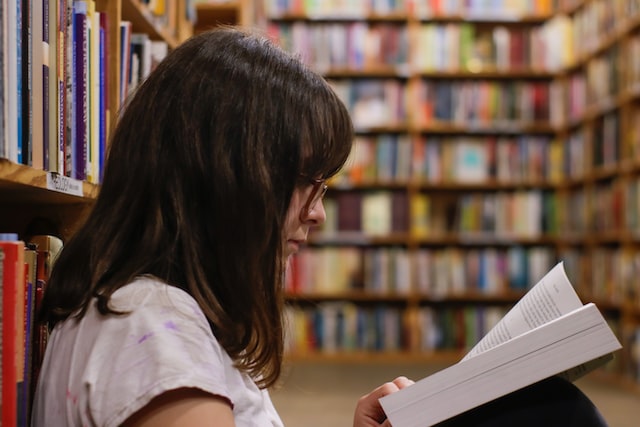
Image Source: https://unsplash.com/photos/kcT-7cirBEw
As parents, we want the best for our children, and that includes providing them with a quality education. This is why so many people go online in search of back-to-school guides and other helpful resources. Fortunately, there are plenty of amazing tools and materials available to help your kids with their studies. In this article, we’ll provide some key examples, ranging from educational apps to specialist websites.
Experiment Kits
These are fantastic ways to help your kids get hands-on experience with science and technology. They allow children to complete experiments related to chemistry, biology, engineering, physics, electronics and robotics. These kits come with detailed instructions that are easy for children to understand. This ensures that each experiment is conducted safely, even though it’s away from the school science lab.
Parents can take part in their child’s learning experience. They can do this by helping out and offering explanations about what’s taking place during the experiments. This encourages active participation and makes it more enjoyable for both parties involved. You can have kids science experiment kits delivered to your home, and try them for free before subscribing. These resources are also used in schools because they don’t involve fires or explosions.
Flashcards
These can be an effective way to help children learn and memorize important information. They can be used for any subject, from math to history. Flashcards are particularly useful for younger students who may not have the attention span or focus to read through long material. Your child can quickly see the content and study it in short bursts, making it easier to remember facts and concepts. Plus, they’re portable so children can take them anywhere.
Your child should read each card one at a time, before flipping it over to review the answer. If there’s any confusion or difficulty understanding a card, go over it together until mastery is achieved. Your child should try using flashcards for five minutes every day, rather than cramming on the night before an exam.
Puzzles And Games
These can help kids develop their problem-solving skills and strengthen their hand-eye coordination. Puzzles are especially helpful for developing spatial reasoning skills and fine motor skills, through manipulating pieces or shapes. Games can be used to introduce basic math and literacy concepts like counting, matching letters and numbers, or spelling words. Games like charades or board games can teach children about strategy-building, and hone their communication skills. Puzzle books or logic puzzles are great for teaching creative thinking in a fun way.
Also, playing educational games together can be a great opportunity for families to bond and enjoy quality time. Board games can also teach children about turn-taking and other social skills that’ll benefit them in the classroom and beyond. Your kids can learn how to interact with one another, and work together as a team.

Image Source: https://unsplash.com/photos/boL69W0UmUM
Educational Apps
These can enable kids to learn at their own pace, whether it’s reading, math, science or history. The apps also provide tools to help parents keep track of their child’s progress. Most educational apps are designed to be entertaining, while teaching the user new concepts. Some popular examples include Duolingo for language learning, DragonBox for math practice, and Kahoot! for trivia games. Educational apps can be found in all major app stores (including Apple App Store, Google Play Store and Amazon AppStore).
Many schools now offer specialized educational apps that are tailored to the specific curriculum used by each school, district or state. These programs often contain interactive lessons that make learning more engaging for students (compared to traditional textbooks or lectures from a teacher in the classroom setting).
Child-Friendly News Articles
These provide age-appropriate information on a variety of subjects, including current events, science, history, and literature. They give young readers the chance to learn about topics beyond what’s covered in class. They also make learning fun by incorporating interesting facts and captivating images into the stories. With “kid-friendly” versions of traditional newspaper articles, children can get all of the educational benefits without feeling overwhelmed by complex vocabulary or too much detail.
Some libraries carry age-specific publications such as National Geographic Kids and TIME Magazine For Kids. They include child-friendly news stories along with activities and other features related to each topic. By exposing children to these materials early on, parents can empower them with knowledge, while fostering a love of reading that’ll stay with them throughout life.
Videos And Infographics
Visual learners can benefit from watching short instructional video clips that explain difficult concepts in simple terms. Kinesthetic learners enjoy interactive videos that allow them to pause and complete tasks as they go along. Teachers can use videos to supplement their lessons, creating more engaging materials for students. Also, a quick quiz embedded into the end of a video lesson can help assess student comprehension.
Infographics can provide visual representations of facts, figures and data. They can be used to explain concepts related to history, science, geography and more. Their strength lies in their being easy to comprehend and visually appealing. They’re especially helpful for younger students who don’t have a lot of experience with numbers or graphs.
Online Learning Platforms
These enable students to interact with teachers and instructors remotely, and to receive feedback and instruction without having to physically attend a school or class. Students can access course materials and assignments from any internet-connected device (i.e. computer, laptop, tablet or smartphone). Many online learning platforms offer interactive features like chat rooms and forums. They enable students to ask questions and discuss topics with other participants in real-time. This helps build social skills and provides students with insight into different perspectives.
Many of these platforms incorporate additional tools such as quizzes, polls, videos, lecture recordings, webinars and other multimedia elements. This makes the material more engaging for learners of all ages.
It’s also worth your child using organizational apps to help with their time management etc. As you can see, there are options for all kinds of different learners. In turn, they make education fun and ensure that children absorb more of the relevant material.